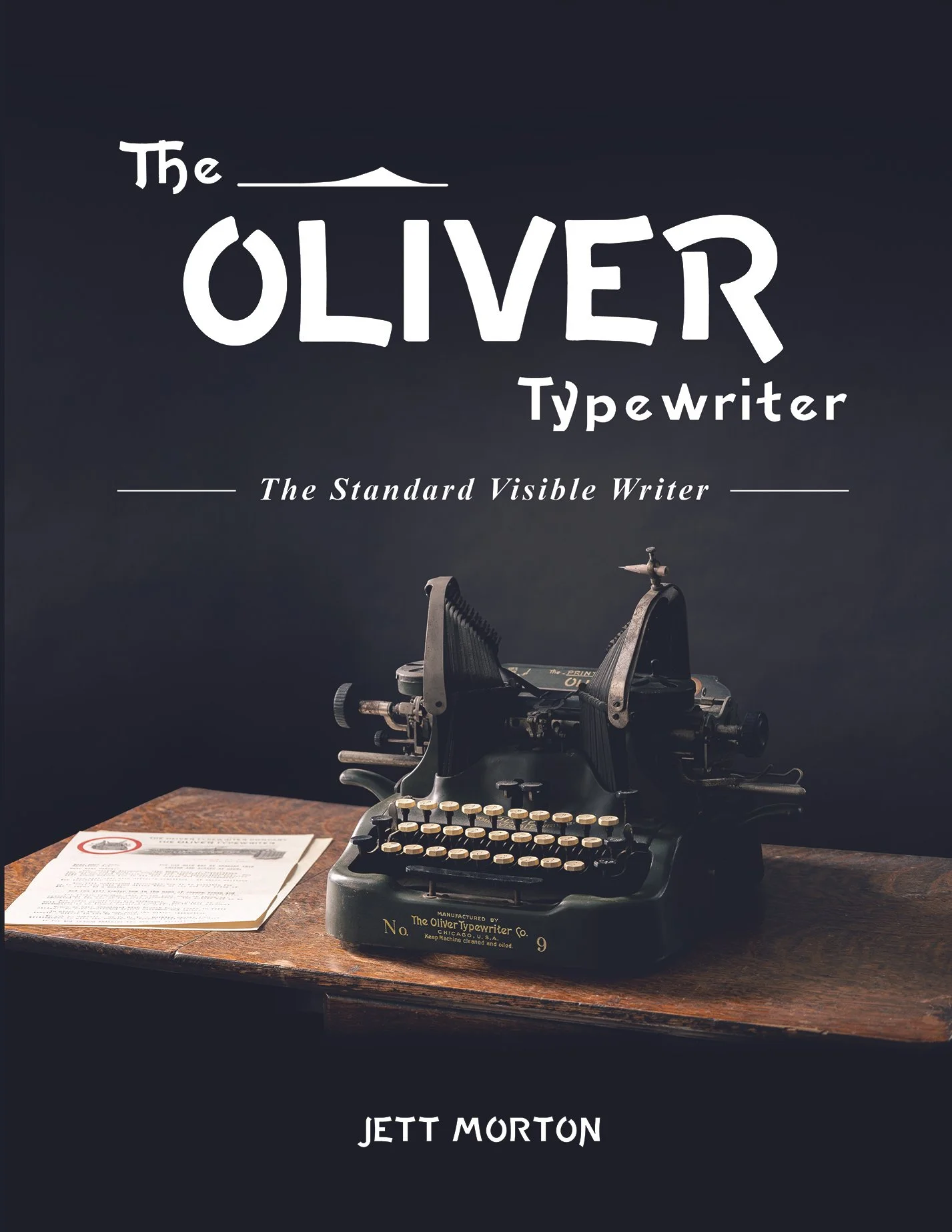Get your copy today
The Oliver Typewriter
The Standard Visible Writer
Morton, Jett (2025)
Escape the modern digital era! Travel back in time over 170 years and follow Reverend Thomas Oliver on his quest to produce the world's first commercially successful typewriter that lets you see as you type. Discover how its simplicity, durability, and visible writing technology propelled the Oliver to become an industry-leading typewriter of the early 20th century.
Learn all about Reverend Thomas Oliver, company history, the Oliver factory and offices, British Oliver, domestic and international models, production information, and so much more!
First Edition
Hardback
8.5 x 11 inches
284 pages
ISBN: 979-8-218-74919-4
Please Note: This is a print-on-demand title. Once your order is placed, it will be submitted to the printer to print your copy. The printer's turnaround time varies, so please allow up to 4 weeks for your order to be processed. Thank you for your patience.
Learn all about Reverend Thomas Oliver, company history, the Oliver factory and offices, British Oliver, domestic and international models, production information, and so much more!
First Edition
Hardback
8.5 x 11 inches
284 pages
ISBN: 979-8-218-74919-4
Please Note: This is a print-on-demand title. Once your order is placed, it will be submitted to the printer to print your copy. The printer's turnaround time varies, so please allow up to 4 weeks for your order to be processed. Thank you for your patience.
Discover Thomas Oliver's visible writing invention
"I was not a machinist, for I had not worked an hour in a machine shop. I had no tools that were at all adequate for making such a machine. I was not an operator, for I had not written a line on a machine until I wrote it on my own. Handicapped thus, I confess to a little surprise when I found that I had incorporated foundation principles that were destined to make it one of the standard machines of the world.”
Thomas Oliver
Complete your Oliver
Get your missing parts
Models
Learn all about your Oliver model
Austin Typewriter, Ink: The Podcast
Episode 68 - A chat with Jett Morton - The Oliver Typewriter
Join David and Everett as they explore the world of The Batwing - The Oliver Typewriter with guest Jett Morton. Jett also talks about his amazing new book exclusive about this very unique typewriter.
Listen now on your favorite app below:
Listen now on your favorite app below:





























